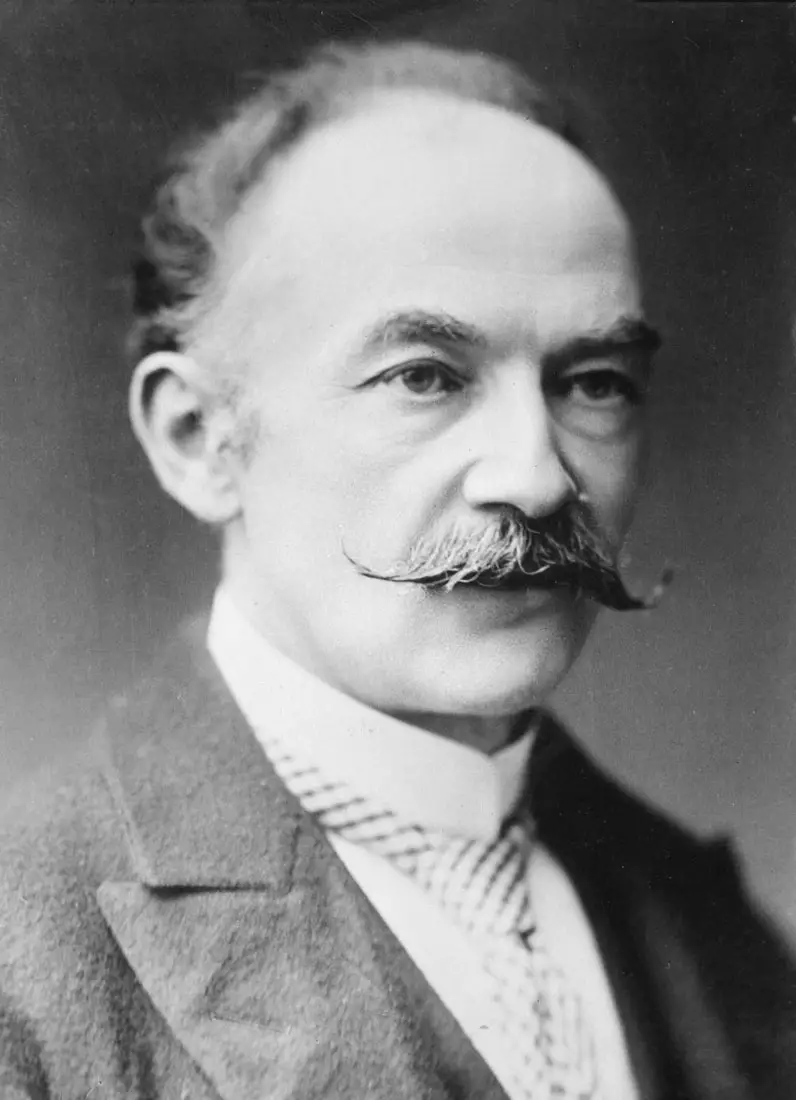
FULL POEM - SCROLL DOWN FOR LINE-BY-LINE ANALYSIS
We stood by a pond that winter day,
And the sun was white, as though chidden of God,
And a few leaves lay on the starving sod;
– They had fallen from an ash, and were gray.
Your eyes on me were as eyes that rove
Over tedious riddles of years ago;
And some words played between us to and fro
On which lost the more by our love.
The smile on your mouth was the deadest thing
Alive enough to have strength to die;
And a grin of bitterness swept thereby
Like an ominous bird a-wing….
Since then, keen lessons that love deceives,
And wrings with wrong, have shaped to me
Your face, and the God curst sun, and a tree,
And a pond edged with grayish leaves.

LINE-BY-LINE ANALYSIS
STANZA 1
We stood by a pond that winter day,
The image of the ‘pond’ is a metaphor for the stillness, hence a lack of passion, in the relationship they shared. The pathetic fallacy of ‘winter’ is significant as ‘winter’ is the final season and is a metaphor for the final phase of their relationship.
And the sun was white, as though chidden of God,
The description of the sun as ‘white’ sets a monochrome image which is a motif of the poem. The lack of power, warmth, and colour in the sun is also a metaphor for the lack of passion and warmth in their relationship.
And a few leaves lay on the starving sod;
The ‘sod’ is the ground and its description as ‘starving’ sets a tone of suffering.
– They had fallen from an ash, and were gray.
The ‘ash’ is an ash tree. Hardy’s inclusion of this creates a subtle juxtaposition between the life and growth associated with trees and the fire and destruction associated with ash. This juxtaposition creates a sense of unease, suggesting that the couple was not compatible.
STANZA 2
Your eyes on me were as eyes that rove
‘Rove’ is defined as travel constantly without a fixed destination. The effect of this word choice is to portray her lack of focus on him and connection in the relationship as a whole. The enjambment means the line flows to the next without a pause, rhythmically mirroring her wandering eyes.
Over tedious riddles of years ago;
The ‘tedious riddles’ indicates that nothing was fresh in their relationship but instead it was one monotonous cycle – this monotony is also captured by the monochrome imagery throughout. ‘Riddles’ also implies a lack of understanding, further emphasising the lack of connection between them.
And some words played between us to and fro
By describing them as ‘some words’ Hardy labels them as insignificant and meaningless. The verb ‘played’ also adds to that insignificance as it adds a childish tone and infantilises their conversations.
On which lost the more by our love.
Their love diminishes as their useless conversations continue.
STANZA 3
The smile on your mouth was the deadest thing
This line is based around another poignant and slightly brutal juxtaposition. In this case, it is the vitality, joy, and positivity personified by the ‘smile’ juxtaposed by the deadness of it. What could Hardy mean by a dead smile? Perhaps one of insincerity or contempt.
Alive enough to have strength to die;
This line is, in my eyes, the most emotive and powerful image of the poem and one that is ingeniously sophisticated. Basically, one could comment on the juxtaposition between ‘life’ and ‘death’. But going more in-depth, Hardy is giving the ‘smile’ a kind of suicidal persona – the life it currently has only serves to give it strength for death. This personifies the woman as having a glimmer of life to her that only serves as a purpose to fulfill her coldness and bitterness.
And a grin of bitterness swept thereby
This is another oxymoron between the glee of a ‘grin’ and ‘bitterness’. As previously mentioned, the purpose of oxymorons and juxtapositions are to create a sense of unease that mirrors their incompatibility as a couple.
Like an ominous bird a-wing….
The word ‘ominous’ sets a dark image of the bird flying overhead (normally an image of freedom). The speaker is afraid something bad is going to happen, the image of the bird adds a context to this like it is circling poised to attack.
STANZA 4
Since then, keen lessons that love deceives,
‘Since then’ acts as a temporal marker – representing a shift in retrospective to a less distant past. This passing in time allows the speaker to learn ‘lessons’ – probably the most positive thing one can take from a breakup.
And wrings with wrong, have shaped to me
‘wrings with wrong’ implies that the speaker has been ‘shaped’ by more pain and distress in the time
after the failed relationship and when he is writing now. These ‘wrings with wrong’ could be further failed relationships and the consonance suggests a consistent flow to the distress.
Your face, and the God curst sun, and a tree,
Any sign of resolution and moving on from the breakup is gone when the imagery returns from the opening stanza, giving the poem a cyclical structure that gives the effect of showing how the speaker just keeps coming back to this relationship and cannot move on. However, there are shifts in how the images are portrayed – as the sun goes from ‘chidden’ to ‘God curst (cursed)’. The addition of religious imagery is a way of the speaker to describe ‘God’ and religion not being on their side and condemning a would-be relationship.
And a pond edged with grayish leaves.
The cyclical nature continues, now with the surroundings of the first stanza being repeated. The pond is now ‘edged with grayish leaves’ suggesting there are more leaves on the ground then the ‘few’ in the first stanza. The idea of falling leaves is one of death, so this image could convey further destruction in their relationship during the time that passed.


